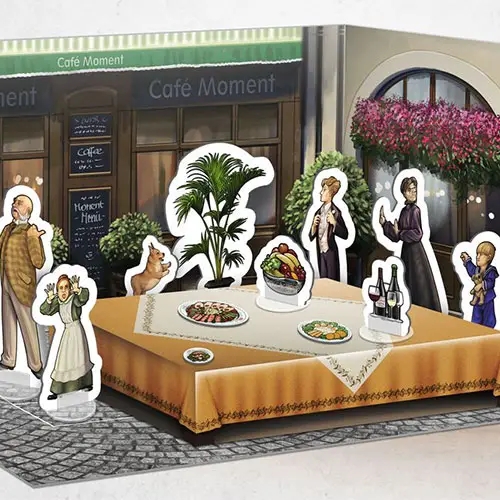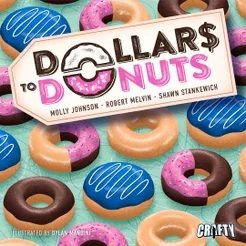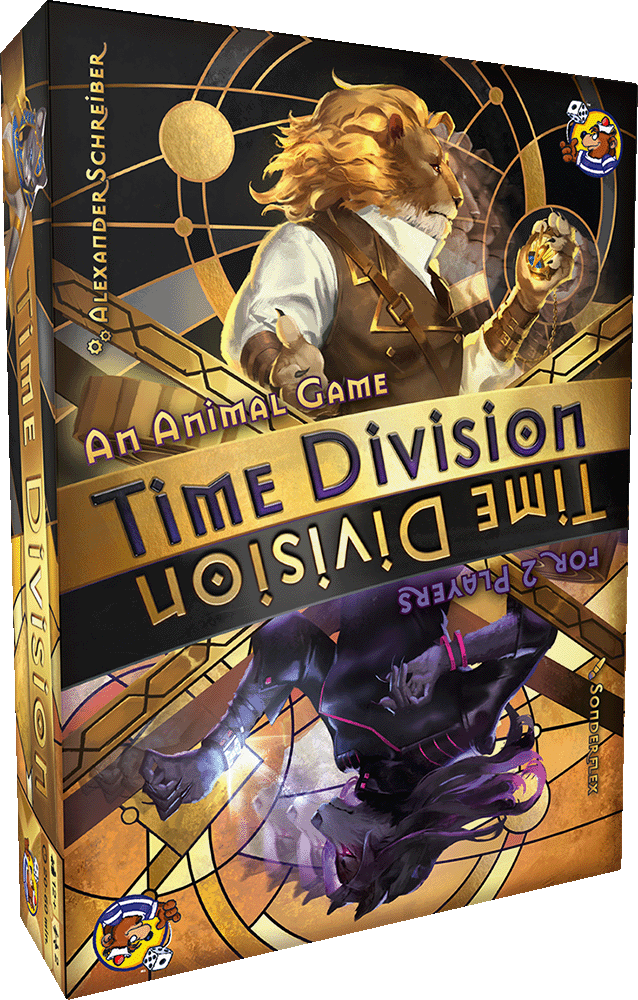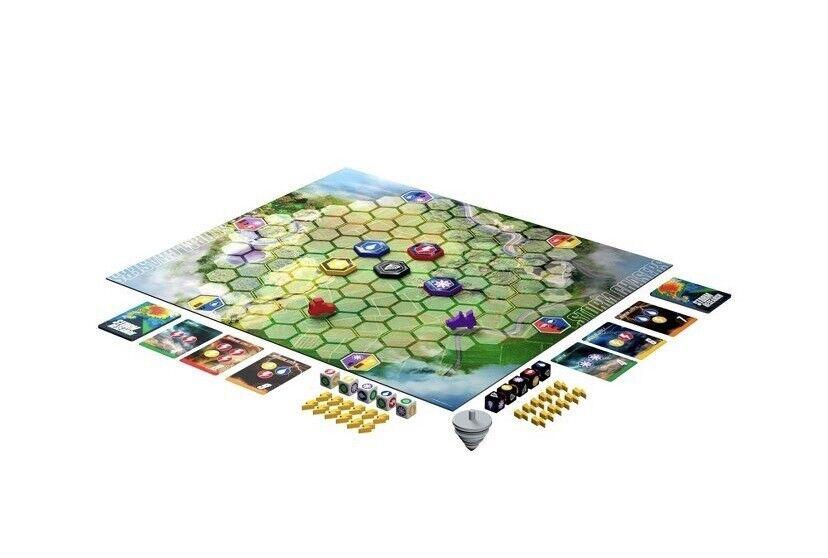There’s been a lot going on on the gaming front lately. Game Night Social, which I host at the Garage Food Hall in Indianapolis, continues every Tuesday night from 6-9 with more than 50 games to choose from. On June 25, we’ll host our second Board Game Swap Meet there. (Bring the games you want to get rid of, swap them for games you want, and every trade puts both parties into a drawing to win a Garage Food Hall Gift Card.)
I’ve also done more private events teaching board games to office workers and partygoers, in addition to serving as trivia guy for the recent Big Broadway Sing-along at the Cabaret and other events.
This year I’ll be returning to InConjunction auctioneering for charity, leading a raucous round of Pub Trivia, and teaching games from the collection. That’s happening July 5-7.
And, of course, Gen Con is on the way and, in addition to staging a special Game Night Social that Thursday, I’ll be at the con searching for great games there to cover for her and other publications (which I’ll link to once they are posted).
In the meantime, I’ve been trying to chip away at the shelf of shame. Here are some games — both recent and older — that have hit my table recently.

Picture Perfect (Arcane Wonders)
Many folks have experienced the challenge of organizing a large-group photo. Nobody wants to be in the front. Cousin Johnny doesn’t want to be next to Aunt Gladys. Sister Francie doesn’t want to be in the photo at all.
Unique themes are hard to come by, but designer Anthony Nouveau nailed it with this one. In Picture Perfect, players are trying to satisfy the needs of a large group of subjects — plus, oddly, a dog and a plant. But information is limited and revisiting requests you saw earlier isn’t easy. In the end, you can’t please everyone — the goal is to please enough to get the highest score.
Points are scored by meeting at least one of each players three demands. Points are lost if you satisfying none of those three and the character is still in your photo at the end.
Each player is given a setting and the same set of character standees. On each turn, each players looks at a different set of three requests for one of the subjects. The young boy, for instance, wants to be in the third row, next to the table, and in front of the lady in yellow. You can start preliminarily placing them and then all players return the request cards to the proper character envelop. A shared card is drawn indicated how envelopes are to be swapped. As you repeat for six rounds, contradictions invariably arrive, say, the lady in yellow doesn’t want to be next to a male. You do your best.
After six rounds are played, players make final placements and snap a photo. Each envelope is then opened and scored based on each players’ photo.
A winner when it comes to originality, rule clarity, and componants, Picture Perfect is a delight for players who don’t get too frustrated by limited information. There’s no way of knowing who is winning until the big reveal, which adds excitement, although the ability to actually impact other players is minimal until you get to a more advance game (included) which involves auctioning of items to enhance the photo.
I wish there were more cards included, since the same six are played each game, but that’s a minor quibble for this standout.
Dollar$ to Donuts (Flatout Games)
Here’s another in the parade of hunger-inducing games that would fit comfortable on a game shelf with Waffle Time, New York Slice, and Azul: Master Chocolateer.
Each player has a grid to fill, ideally with completed donuts. You do that by acquiring “specials” tiles from the donut shop, each of which can cover up to four spaces on your board. Complete donuts by matching halves and use those donuts to satisfy customers. Turns move quickly as grids fill up.
Players have the option of letting tiles extend off their grid if that helps score more sweet stuff, but that can hurt in the end when empty spaces lose points. There are bonuses for satisfying the most customers from particular neighborhoods and there’s a little more to it than that, but not much.
Which is just fine. Simple, attractive, and fun while being a bit limited in variability, Dollar$ to Donuts is a good gateway game for those reticent about trying games with heavier themes.
Time Division (Heidelbar Games)
Here’s a handsomely designed game where overthinking of theme and non-intuitive iconography get in the way of what might be a decent two-player card combat game.
In theory, Time Division is about two time agencies populated by anthropomorphic animals competeing to…frankly, none of this has anything to do with game play.
Yes, you could take the time learning and teaching the icons but the end result has to be worth it. In this case, it isn’t.
Storm Chasers (Buffalo Games and Puzzles)
I’m second to none in my admiration of an original componant that actual impacts a game rather than simply being an add on. And the gimmicky device in this one helped convince me to pull it from the discount store shelf into my cart.
Storm Chasers is a knuckle-bumping, real-time dice rolling game where one player per round plays the storms while the others play the chasers. While a 3-minute timer runs, unique dice help chasers either approach storms, collect data from storms they’ve reached, or deliver data to a research station. If you are taking on the god-like role of the storms, your dice indicate which storm you can move, in most cases trying to get them away from the chasers. Except for the tornado.
If tornado and a chaser end up on the same space, the game is paused while the tornado (a top) is spun on the board. Wherever the tornado lands when it winds down is where that player has to move to. Then is all starts up again. If it hits another player’s pawn, that player is also moved.
Storm Chasers is quick, the iconogrophy is clear, and the chaos is real as players frantically role and reach onto the board to move pieces. The downside is that It can be too obvious how things are going to end up since the player acting as the storm in the final round may already be too short of points to win.
I’m not sure if allowing the storm to continue rolling while the tornado is spinning adds a bit too much variability to things. And the end result of a tornado spin can mean the chaser only have to move a space or two away from where it started, running a much-ado-about-nothing risk.
Still, there’s at least a few plays of fun here as an easy-to-teach filler — especially if you find it at a discount outlet.
Glory Islands (Rio Grande Games)
This one sat on the shelf for a long while since it didn’t seem to be anything special. But once played, I was ready to play again and looking forward to teaching it to others. It’s gameplay is simple but there are multiple paths to victory, interesting choices to make, and a nice balance of point scoring/point reduction that adds tension.
Players start with the same 1-5 movement cards and each plays one on a turn, moving their pirate ship around the board’s central islands. Zooming ahead with a 5 may seem appealing, but the card also makes you move seven spaces on a descending point track that can severely impact your end game. Want your discarded cards back, you have to play a 1.
At each stop, players can send a pirate onto the island a number of spaces up to the number on the card played. Play a 2 card and your boat moves up to two spaces and your pirate can go up to two spaces inland. Each space scores victory points, barrels (good for trades later) or treasures (which increase in value based on set collection). Also, if you place a pirate on a victory point space, you get an additional point any time a boat lands in its row or column. And if you place a pirate so as to completely fill an island, there are majority/second place points to be had.
Fun, 40-minute, minimal setup games aren’t easy to come by. This one’s quick. It’s strategic. And it’s staying in the collection.
Note: The above includes games purchased, games traded for, and games supplied as review copies.




